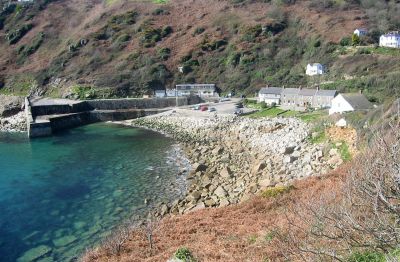
Apart from the natural beauty of this small cove, Lamorna is perhaps best known for the Post-Impressionist artists who came to stay here in the early part of the twentieth century. One of them, Lamorna Birch, even took his name from the place. He was born Samuel John Birch and moved to live in Lamorna shortly after the turn of the century. Before long, he was followed by other artists, many of whom were associated with the famous Newlyn School.
Laura Knight is probably the best known of the group, which continued to grow throughout the early years of the last century. Other artists included Harold Knight, Alfred Munnings, Dod and Ernest Proctor¸ Charles and Ella Naper, and Robert and Eleanor Hughes. Even Augustus John was a visitor to the thriving settlement. The colony was somewhat fragmented by the onset of the First World War, but Lamorna Birch remained there for many more years.
Up to the present day, Lamorna has been popular with painters, potters, craftsmen and writers. Some of the better known associated with the hamlet are John le Carré and Derek Tangye. There are still many artists and craftsmen living in the area around Lamorna. The area boasts several potteries and local paintings can be found in shops in Mousehole and further afield.
Lamorna Cove is at the end of a lush valley watered by a stream, running down to the sea. A few cottages and an old inn border the narrow lane. This road to the small harbour cuts through woods, unusual in the far west of Cornwall. A bus runs from Penzance to the cove, but it is best to check the timetables as the service is infrequent. There is a paying car park on the harbour and a small café, but the hamlet is basically unspoiled with very little holiday accommodation.
Not far from Lamorna are several interesting archaeological sites. These include The Merry Maidens and The Pipers at Boleigh. A walk from the cove towards Mousehole passes an old water mill and leads through the hamlet of Castallack. There are various footpaths in the area, in addition to the coastal path running through Lamorna from Mousehole to Porthcurno. This is well worth exploring, if only for the stunning views and the rugged coastline.
The rocky little cove has a small quay which is still used for fishing in a small way. It is not well protected from the elements and boats have to be dragged up the slipway when the weather is unsettled or stormy. The harbour construction is granite, reflecting one of the industries of the past. The granite blocks were quarried near to here and then shipped from Penzance to various destinations. The stone was of a high quality and used in many local buildings and wharves. The remnants of this trade can still be seen strewn on the hillsides around the cove but the quarries have been long derelict.
















